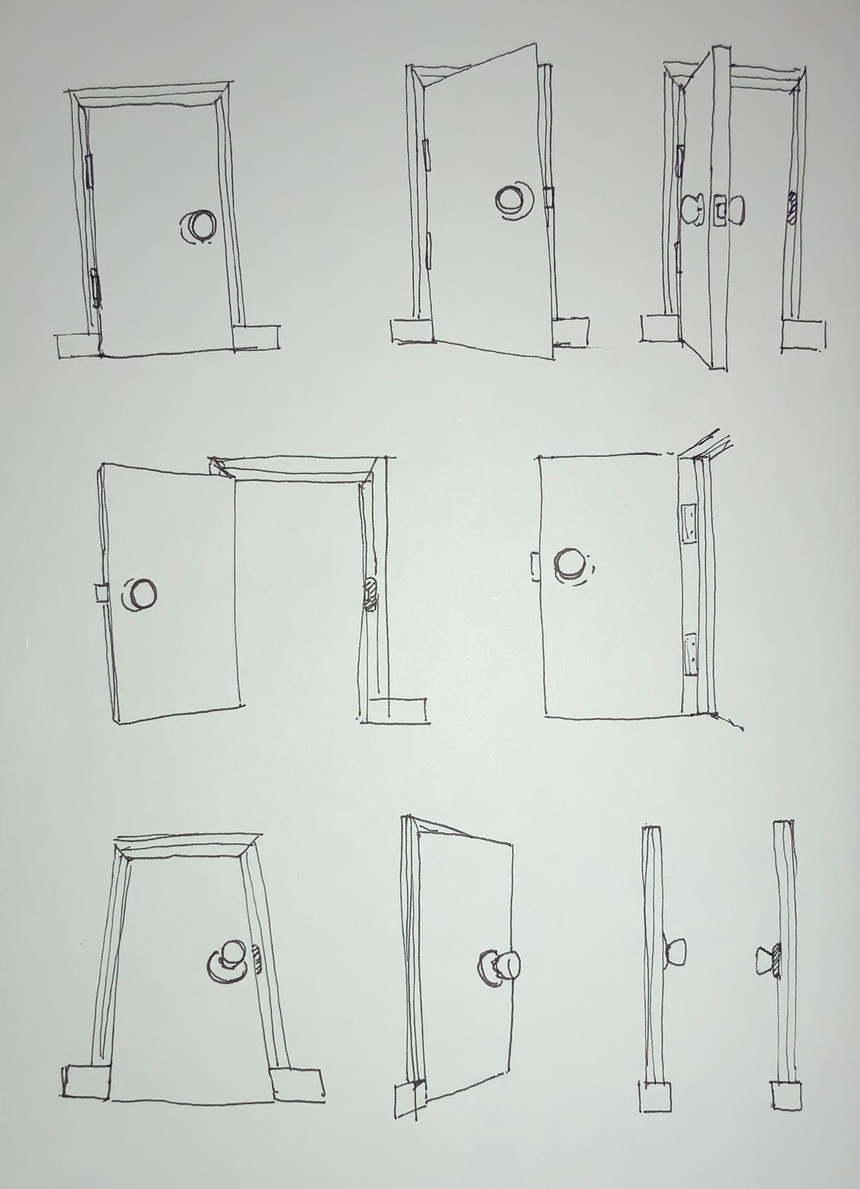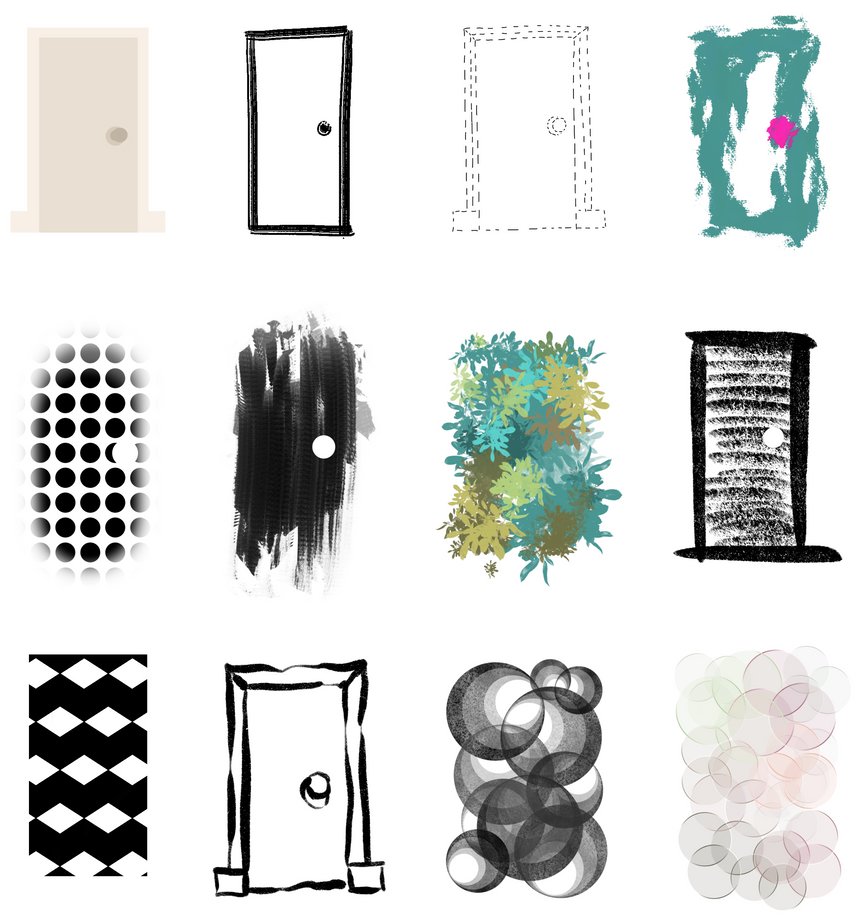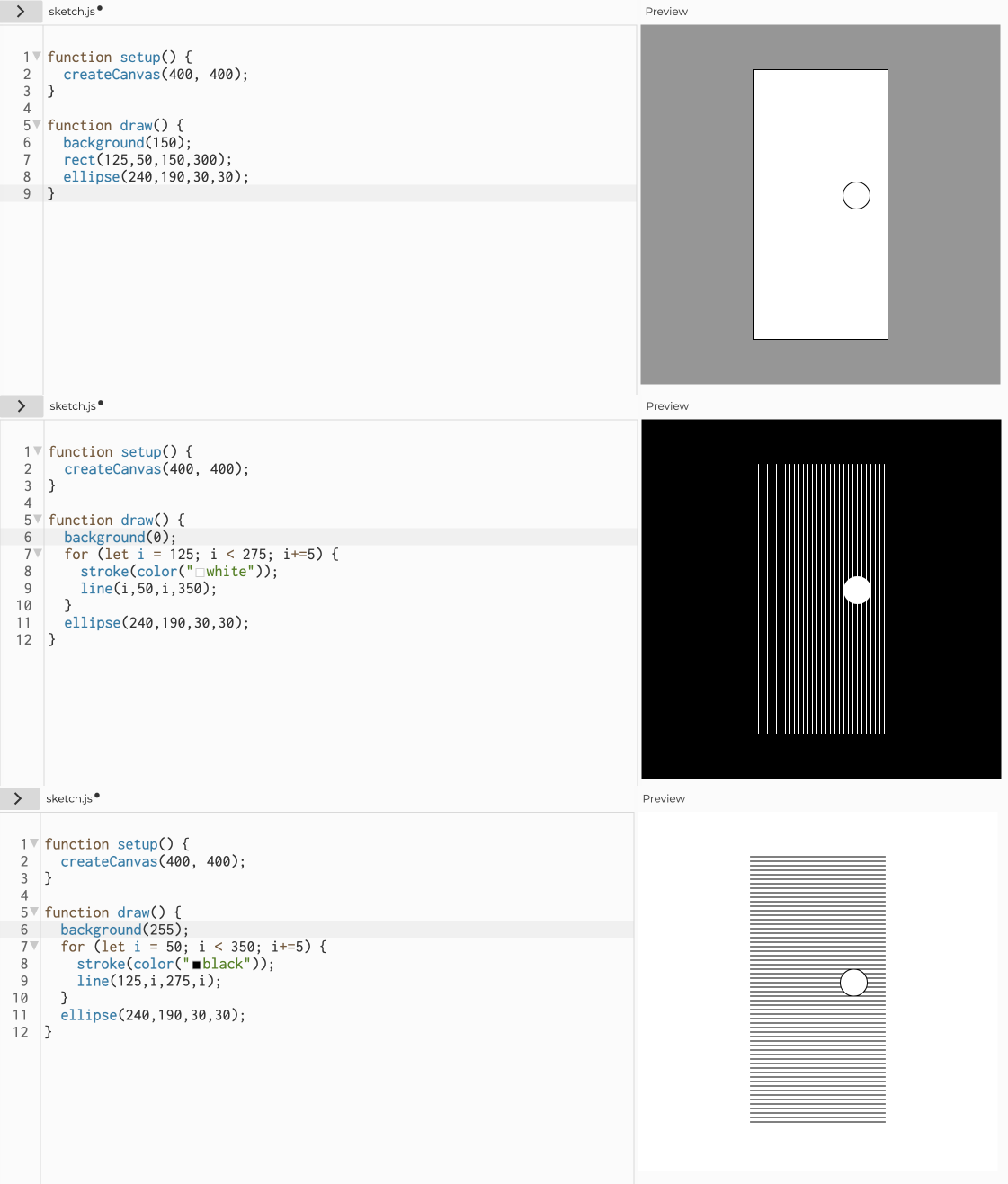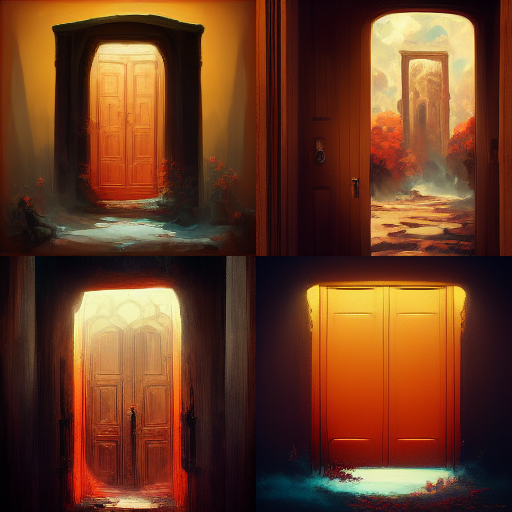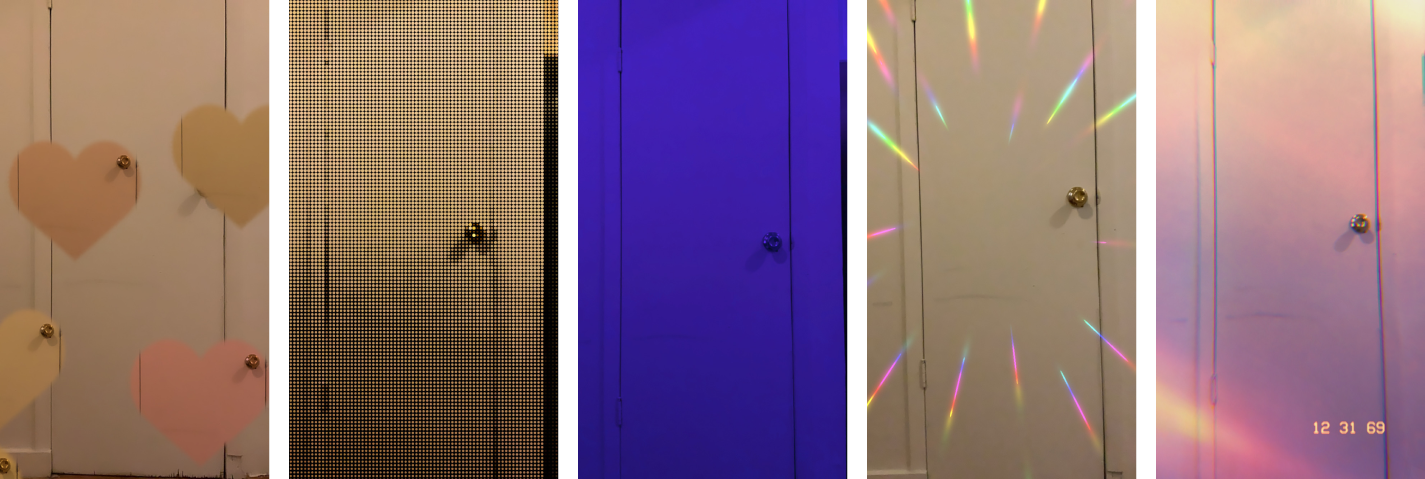From this week’s Ideation & Prototyping, I was tasked with a “50 Shades” assignment. The tasks are to:
Choose an object to work with.
Make 50 different renderings of the object using different tools, materials, techniques, mediums, and experimenting with different styles, forms, and treatments while still keeping the object recognizable.
I decided to choose a closet door in my room to be an object that I would be experimenting with.
Observing
I started by observing the door, looking at its edges, colors, surfaces, and the knob. Then I switched my spot, trying to observe from the left, the right, and at the front. After completely looking at every corner and angle of it, I drew.
Here’s the hand sketches of the door from different perspectives.
9 hand sketches of a door
Although they are all sketches of the same door, they look different—even the sketches of the left and right sides of the door. There are little details that I might not be able to catch if I didn’t observe thoroughly. This experiment gave me a good starting point of understanding the object.
Experimenting
Moving from a traditional pen and paper, I wanted to experiment the door with a digital software. Therefore, I use Procreate, a software on iPad, to draw the same door using different brushes and styles.
12 digital drawings of a door (in Procreate)
I had a lot of fun exploring various kinds of brushes, colors, and shapes to draw a door, which made each of the door unique. I began with recreating the door using its real color and shape in the first drawing, then tried strokes, dashes, and changed brushes. Some of these drawings took me five seconds to finish, while the others took me ten minutes of drawing, deleting, and redrawing again and again. While creating different versions of a door from one covered with plants to a door of round glasses, I found this to be a really good practice that helps develop my creativity.
Hands-on
This is probably where I found it the most fun. After drawing a lot of doors, I started collecting recycled materials and used it for crafting.
7 handcrafted objects of a door
When I arranged the materials to make a shape of a door, I didn’t plan much. I just randomly picked coins, ads papers, and any objects that are nearby, then I placed them on the floor and started playing with their shapes and colors. While doing that, I also observed them using eyes and hands. I looked at all the edges, touched, and felt the materials. I found it very satisfying when I did that because it made me concentrate to the present.
Coding
I just learned p5.js in Creative Coding and thought it would be fun to experiment the door in that way, so I started coding.
3 p5.js visuals of a door
The three visuals are not so different from each other because I wanted to see what would change when I made a little edits. I used different shapes, colors, and positions. It was interesting to try different commands to make the visuals look like the same door.
AI Interpretation
Now I wanted to go beyond my own interpretation of the door. In AI Poetry class, we used Midjourney, an AI that creates images from textual descriptions, to make visuals for poems. So, I typed “a door” on the Midjourney discord channel, and here is a set of images that the AI created:
4 AI-generated doors
Although it was not nearly like my closet door, the results were still interesting. These images are all wooden doors and are in the same color. Even the settings and angles are also similar. It made me wonder how the AI has been trained: what kinds of photos of doors that they have seen, and why a simple word like “a door” could create four similar images.
Looking at the same door, but with different lens
The AI-generated doors made me curious about how the door would be in a different lens, so I tried it with Instagram filters.
5 images of a door with Instagram filters
I was fascinated by how one door could be seen in many ways by just tapping. These filters were made by different Instagram users, from different places and time. I felt like I borrowed someone’s eyes to see the door I used to see everyday, and the results were amazing.
Reflection
I had a lot of fun exploring and experimenting with the door! Trying to create different versions of one object is not easy, but when I let my creativity lead the process, it worked somehow. I particularly enjoyed the hands-crafting ones the most, but all of them left me with ideas (and some questions). This assignment allows me to observe, ideate, and learn from the results. In the future, I want to also create another 50 shades of something else: to understand more about the object and practice my creative process.
